South Texas
Wildlife and Bird
Photo Tour and Workshop
A Very Special and Unique Photographic
Shooting and Learning Opportunity
Date: May 29- June 5, 2015
Price: $ 2495
Limited to SIX Participants
(no single occupancy available)
At Campos Viejos, Dos Venadas, and
Santa Clara
Ranches
Includes all meals, lodging, and Instruction.
For more information, see our 2013 Scouting Report and our 2014 Trip Report
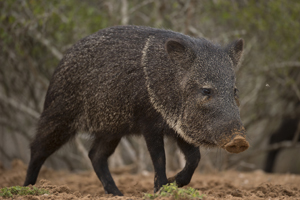 There are only two areas of the country that ever tempt me to leave our home at Hoot Hollow, PA, and one of these is South Texas. This area has, perhaps, the greatest biodiversity of anywhere in the United States, with a blend of both North American temperate and Meso America tropical species. White-tailed deer and Javelinas, Northern Cardinals and Green Jays, Leopard Frogs and grotesque Mexican Burrowing Frogs, Bobcats and Ocelots -- all are examples of this unique mixture of the incredible diversity found here.
There are only two areas of the country that ever tempt me to leave our home at Hoot Hollow, PA, and one of these is South Texas. This area has, perhaps, the greatest biodiversity of anywhere in the United States, with a blend of both North American temperate and Meso America tropical species. White-tailed deer and Javelinas, Northern Cardinals and Green Jays, Leopard Frogs and grotesque Mexican Burrowing Frogs, Bobcats and Ocelots -- all are examples of this unique mixture of the incredible diversity found here.
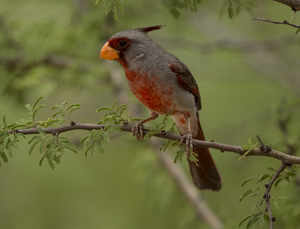 Our Photo Tour and Workshop will be based at three different ranches that are reasonably close to one another but offer completely unique photo opportunities. All three have permanent blinds set up at water holes or feeding stations where we'll have the opportunity to photograph a wide variety of species, and many of these at ground-level.
Our Photo Tour and Workshop will be based at three different ranches that are reasonably close to one another but offer completely unique photo opportunities. All three have permanent blinds set up at water holes or feeding stations where we'll have the opportunity to photograph a wide variety of species, and many of these at ground-level.
One of these ranches, the Santa Clara, was the site for the over-all winner of the 2013 Coastal Bend Wildlife Photo Contest, Hector Astorga, who will be assisting us at the ranch during our stay.
Further along in this brochure I'll discuss the photo opportunities at the ranch, but first .....
Why is this Tour so Special and Unique?
One of the greatest advantages that the South Texas Ranches offer is their exclusivity; they are private, fenced properties with controlled access. Consequently, equipment that is left out and unattended for camera trap techniques are safe, and with the normally dry weather in this area rain is (usually) not an issue.
Consequently, weather permitting, we'll be able to set out one or more camera traps to attempt to capture nocturnal wildlife, which may range from bats and bobcats to owls and raccoons.
Most photographers do not have the equipment or the expertise in using camera traps and part of our 'workshop' will be instructing and demonstrating the use of this equipment in an actual shooting situation. And here is where you'll either love this idea or not:
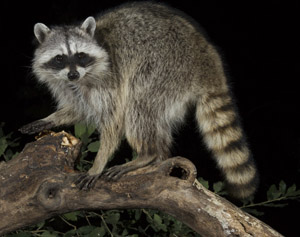
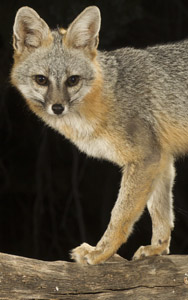
Realistically, there is usually only one or two 'prime' vantage points on a game trail, watering hole, or flyway, where a camera can be positioned for the best angle and composition. It would be silly to have as many as five or six cameras all crowded into one spot, trying to get that angle, as this might be physically impossible and might also intimidate or repel our subjects.
Alternatively, one could place one camera and have everyone, one by one, put their CF card into that camera so that they'd have a chance to capture that best angle. Of course, photographer three, for example, might have great luck and get a great shot during her time, while everyone else captures nothing during their rotation.
What I'm proposing here is a seminar-like atmosphere where we'll discuss and brainstorm how we'll approach our camera trap set-up, how we'll place the camera trigger and flashes, and how we should compose the one or two cameras involved. Participants will not only learn about the various equipment that can be used for this type of photography but also how to set it up and actually use this equipment in a field situation. However, there's more.
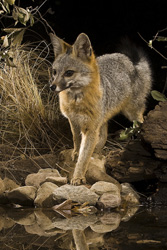
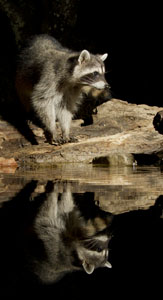
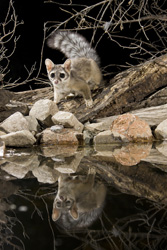
Whatever we capture, everyone involved will get a copy of the RAW files for their personal use. The only restriction on the use of these RAW files is for sales or photo competitions, which would be unlikely I'd suspect. It would be a bit odd if the BBC or Nature's Best received six or seven exact images generated from this shoot! Personal use, for display on your website, for an ebook or Blurb, Shutterfly, or similar book, for prints, etc. there would be no restriction on use.
Although someone might object to this and want to use their CF card for their use only, for the reasons listed above I find that desire a little silly and very unfair. This shooting opportunity may provide you with some real knock-out shots, if luck is with us, that would be unattainable any other way and will also provide you with the information you would need to do this type of work on your own.
Don't worry about the 'seminar' aspect of this exercise. I'll be guiding you throughout, and I'll already have an idea of how we'll be approaching the task, so we won't be stumbling around like novices. Ultimately, if we have luck, you'll have great shots and learn a lot, too!
Our Subjects
From the blinds at the three ranches we'll have the possibility of a huge variety of birds, as some species may still be migrating north. However, our resident species will keep us quite busy, and could include most of the following, and I'm sure I'm missing many:
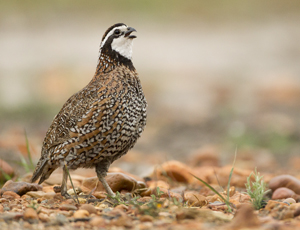
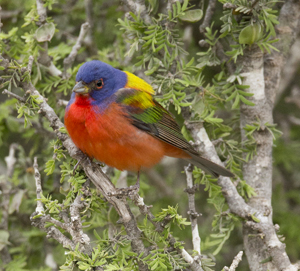
Some of the Birds: Harris Hawk, Crested Caracara, White-tailed Hawk, Eastern Screech Owl, Great Horned Owl, Roadrunner, Bobwhite Quail, Scaled Quail,Buff-bellied Hummingbird, Common Poorwill, Yellow-billed Cuckoo, Grove-billed Ani, Long-billed Thrasher, Curve-billed Thrasher, Mockingbird, Western and Couch's Kingbird, Vermillion Flycatcher, Kiskadee Flycatcher, Black-tailed Gnatcatcher, Chihuahuan Raven, Green Jay, Yellowthroat, Black-crested Titmouse, Verdin, Black-throated Sparrow, Northern Cardinal, Pyrrhuloxia, Painted Bunting, Audubon’s Oriole, Bronzed Cowbird, Olive Sparrow, Lark Sparrow.
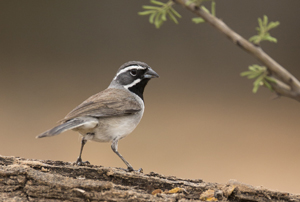
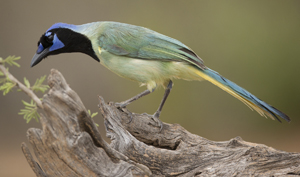
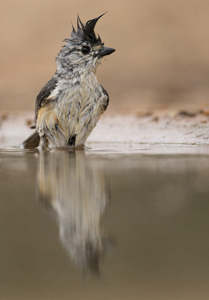
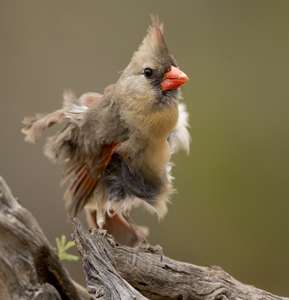
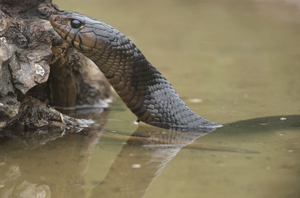
Some of the Reptiles and Amphibians: Indigo Snake, Western Diamondback Rattlesnake, Desert Kingsnake, Racers, Whipsnakes, Coachwhip,
Fence Lizard, Banded Geckos, Reticulate Collared Lizards,
Desert Tortoise,
Leopard Frog, Mexican Burrowing Frog,
Couch's Spadefoot Toad.
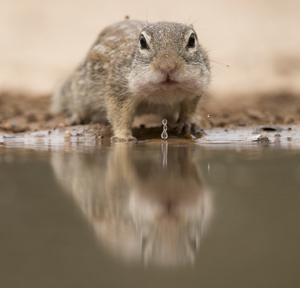 Some of the Mammals: Opossum, Armadillo, White-tailed Deer, Collared Peccary, Gray Fox, Coyote, Bobcat, Raccoon, Skunk sp., Badger, Desert Cottontail, Mexican Spotted Groundsquirrel
Some of the Mammals: Opossum, Armadillo, White-tailed Deer, Collared Peccary, Gray Fox, Coyote, Bobcat, Raccoon, Skunk sp., Badger, Desert Cottontail, Mexican Spotted Groundsquirrel
Of course, in four days of shooting we won't photograph all of these species, but this gives you a sampling of the variety of species available and that have been photographed at these ranches. Pretty darn exciting!
I'm especially excited about the possibilities we may have at night, with bobcats and other nocturnal mammals visiting a waterhole or wandering down a game trail.
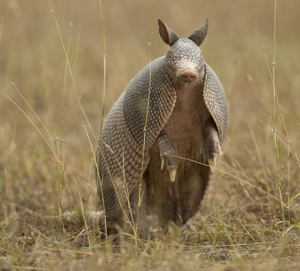
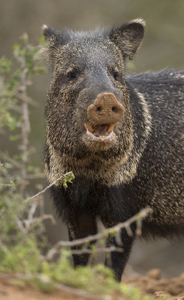
Transportation to the ranches is not included. The nearest airport is in McAllen, TX, or to the north, San Antonio, which may have less expensive flights but a longer drive to reach the ranches.
Additionally, for those with more time, the Santa Ana Wildlife Refuge and Benston State Park along the Rio Grande,
and Laguna Atacosa Wildlife Refuge near the Gulf Coast are well-worth visiting. Noteable species include Aplomado Falcon, which nests at Laguna Atacosa, and the Chachalacas, Ringed Kingfisher, and Green Kingfisher that can be found at Santa Ana.
Space is limited. Contact our Office ASAP to register!
About Your Leaders
Contact us by e-mail at
info@hoothollow.com
Office Phone: 717 543-6423
Or FAX us at: (717) 543-5342
Return to HomePage or to photo tours general information.
South Texas
Wildlife and Bird
Photo Tour and Workshop
A Very Special and Unique Photographic
Shooting and Learning Opportunity
Date: May 29- June 5, 2015
Price: $ 2495
Limited to SIX Participants
(no single occupancy available)
At Campos Viejos, Dos Venadas, and
Santa Clara
Ranches
Includes all meals, lodging, and Instruction.
For more information, see our 2013 Scouting Report and our 2014 Trip Report
 There are only two areas of the country that ever tempt me to leave our home at Hoot Hollow, PA, and one of these is South Texas. This area has, perhaps, the greatest biodiversity of anywhere in the United States, with a blend of both North American temperate and Meso America tropical species. White-tailed deer and Javelinas, Northern Cardinals and Green Jays, Leopard Frogs and grotesque Mexican Burrowing Frogs, Bobcats and Ocelots -- all are examples of this unique mixture of the incredible diversity found here.
There are only two areas of the country that ever tempt me to leave our home at Hoot Hollow, PA, and one of these is South Texas. This area has, perhaps, the greatest biodiversity of anywhere in the United States, with a blend of both North American temperate and Meso America tropical species. White-tailed deer and Javelinas, Northern Cardinals and Green Jays, Leopard Frogs and grotesque Mexican Burrowing Frogs, Bobcats and Ocelots -- all are examples of this unique mixture of the incredible diversity found here.
 Our Photo Tour and Workshop will be based at three different ranches that are reasonably close to one another but offer completely unique photo opportunities. All three have permanent blinds set up at water holes or feeding stations where we'll have the opportunity to photograph a wide variety of species, and many of these at ground-level.
Our Photo Tour and Workshop will be based at three different ranches that are reasonably close to one another but offer completely unique photo opportunities. All three have permanent blinds set up at water holes or feeding stations where we'll have the opportunity to photograph a wide variety of species, and many of these at ground-level.
One of these ranches, the Santa Clara, was the site for the over-all winner of the 2013 Coastal Bend Wildlife Photo Contest, Hector Astorga, who will be assisting us at the ranch during our stay.
Further along in this brochure I'll discuss the photo opportunities at the ranch, but first .....
Why is this Tour so Special and Unique?
One of the greatest advantages that the South Texas Ranches offer is their exclusivity; they are private, fenced properties with controlled access. Consequently, equipment that is left out and unattended for camera trap techniques are safe, and with the normally dry weather in this area rain is (usually) not an issue.
Consequently, weather permitting, we'll be able to set out one or more camera traps to attempt to capture nocturnal wildlife, which may range from bats and bobcats to owls and raccoons.
Most photographers do not have the equipment or the expertise in using camera traps and part of our 'workshop' will be instructing and demonstrating the use of this equipment in an actual shooting situation. And here is where you'll either love this idea or not:


Realistically, there is usually only one or two 'prime' vantage points on a game trail, watering hole, or flyway, where a camera can be positioned for the best angle and composition. It would be silly to have as many as five or six cameras all crowded into one spot, trying to get that angle, as this might be physically impossible and might also intimidate or repel our subjects.
Alternatively, one could place one camera and have everyone, one by one, put their CF card into that camera so that they'd have a chance to capture that best angle. Of course, photographer three, for example, might have great luck and get a great shot during her time, while everyone else captures nothing during their rotation.
What I'm proposing here is a seminar-like atmosphere where we'll discuss and brainstorm how we'll approach our camera trap set-up, how we'll place the camera trigger and flashes, and how we should compose the one or two cameras involved. Participants will not only learn about the various equipment that can be used for this type of photography but also how to set it up and actually use this equipment in a field situation. However, there's more.



Whatever we capture, everyone involved will get a copy of the RAW files for their personal use. The only restriction on the use of these RAW files is for sales or photo competitions, which would be unlikely I'd suspect. It would be a bit odd if the BBC or Nature's Best received six or seven exact images generated from this shoot! Personal use, for display on your website, for an ebook or Blurb, Shutterfly, or similar book, for prints, etc. there would be no restriction on use.
Although someone might object to this and want to use their CF card for their use only, for the reasons listed above I find that desire a little silly and very unfair. This shooting opportunity may provide you with some real knock-out shots, if luck is with us, that would be unattainable any other way and will also provide you with the information you would need to do this type of work on your own.
Don't worry about the 'seminar' aspect of this exercise. I'll be guiding you throughout, and I'll already have an idea of how we'll be approaching the task, so we won't be stumbling around like novices. Ultimately, if we have luck, you'll have great shots and learn a lot, too!
Our Subjects
From the blinds at the three ranches we'll have the possibility of a huge variety of birds, as some species may still be migrating north. However, our resident species will keep us quite busy, and could include most of the following, and I'm sure I'm missing many:


Some of the Birds: Harris Hawk, Crested Caracara, White-tailed Hawk, Eastern Screech Owl, Great Horned Owl, Roadrunner, Bobwhite Quail, Scaled Quail,Buff-bellied Hummingbird, Common Poorwill, Yellow-billed Cuckoo, Grove-billed Ani, Long-billed Thrasher, Curve-billed Thrasher, Mockingbird, Western and Couch's Kingbird, Vermillion Flycatcher, Kiskadee Flycatcher, Black-tailed Gnatcatcher, Chihuahuan Raven, Green Jay, Yellowthroat, Black-crested Titmouse, Verdin, Black-throated Sparrow, Northern Cardinal, Pyrrhuloxia, Painted Bunting, Audubon’s Oriole, Bronzed Cowbird, Olive Sparrow, Lark Sparrow.





Some of the Reptiles and Amphibians: Indigo Snake, Western Diamondback Rattlesnake, Desert Kingsnake, Racers, Whipsnakes, Coachwhip,
Fence Lizard, Banded Geckos, Reticulate Collared Lizards,
Desert Tortoise,
Leopard Frog, Mexican Burrowing Frog,
Couch's Spadefoot Toad.
 Some of the Mammals: Opossum, Armadillo, White-tailed Deer, Collared Peccary, Gray Fox, Coyote, Bobcat, Raccoon, Skunk sp., Badger, Desert Cottontail, Mexican Spotted Groundsquirrel
Some of the Mammals: Opossum, Armadillo, White-tailed Deer, Collared Peccary, Gray Fox, Coyote, Bobcat, Raccoon, Skunk sp., Badger, Desert Cottontail, Mexican Spotted Groundsquirrel
Of course, in four days of shooting we won't photograph all of these species, but this gives you a sampling of the variety of species available and that have been photographed at these ranches. Pretty darn exciting!
I'm especially excited about the possibilities we may have at night, with bobcats and other nocturnal mammals visiting a waterhole or wandering down a game trail.


Transportation to the ranches is not included. The nearest airport is in McAllen, TX, or to the north, San Antonio, which may have less expensive flights but a longer drive to reach the ranches.
Additionally, for those with more time, the Santa Ana Wildlife Refuge and Benston State Park along the Rio Grande,
and Laguna Atacosa Wildlife Refuge near the Gulf Coast are well-worth visiting. Noteable species include Aplomado Falcon, which nests at Laguna Atacosa, and the Chachalacas, Ringed Kingfisher, and Green Kingfisher that can be found at Santa Ana.
Space is limited. Contact our Office ASAP to register!
About Your Leaders
Contact us by e-mail at
info@hoothollow.com
Office Phone: 717 543-6423
Or FAX us at: (717) 543-5342
Return to HomePage or to photo tours general information.
South Texas
Wildlife and Bird
Photo Tour and Workshop
A Very Special and Unique Photographic
Shooting and Learning Opportunity
Date: May 29- June 5, 2015
Price: $ 2495
Limited to SIX Participants
(no single occupancy available)
At Campos Viejos, Dos Venadas, and
Santa Clara
Ranches
Includes all meals, lodging, and Instruction.
For more information, see our 2013 Scouting Report and our 2014 Trip Report
 There are only two areas of the country that ever tempt me to leave our home at Hoot Hollow, PA, and one of these is South Texas. This area has, perhaps, the greatest biodiversity of anywhere in the United States, with a blend of both North American temperate and Meso America tropical species. White-tailed deer and Javelinas, Northern Cardinals and Green Jays, Leopard Frogs and grotesque Mexican Burrowing Frogs, Bobcats and Ocelots -- all are examples of this unique mixture of the incredible diversity found here.
There are only two areas of the country that ever tempt me to leave our home at Hoot Hollow, PA, and one of these is South Texas. This area has, perhaps, the greatest biodiversity of anywhere in the United States, with a blend of both North American temperate and Meso America tropical species. White-tailed deer and Javelinas, Northern Cardinals and Green Jays, Leopard Frogs and grotesque Mexican Burrowing Frogs, Bobcats and Ocelots -- all are examples of this unique mixture of the incredible diversity found here.
 Our Photo Tour and Workshop will be based at three different ranches that are reasonably close to one another but offer completely unique photo opportunities. All three have permanent blinds set up at water holes or feeding stations where we'll have the opportunity to photograph a wide variety of species, and many of these at ground-level.
Our Photo Tour and Workshop will be based at three different ranches that are reasonably close to one another but offer completely unique photo opportunities. All three have permanent blinds set up at water holes or feeding stations where we'll have the opportunity to photograph a wide variety of species, and many of these at ground-level.
One of these ranches, the Santa Clara, was the site for the over-all winner of the 2013 Coastal Bend Wildlife Photo Contest, Hector Astorga, who will be assisting us at the ranch during our stay.
Further along in this brochure I'll discuss the photo opportunities at the ranch, but first .....
Why is this Tour so Special and Unique?
One of the greatest advantages that the South Texas Ranches offer is their exclusivity; they are private, fenced properties with controlled access. Consequently, equipment that is left out and unattended for camera trap techniques are safe, and with the normally dry weather in this area rain is (usually) not an issue.
Consequently, weather permitting, we'll be able to set out one or more camera traps to attempt to capture nocturnal wildlife, which may range from bats and bobcats to owls and raccoons.
Most photographers do not have the equipment or the expertise in using camera traps and part of our 'workshop' will be instructing and demonstrating the use of this equipment in an actual shooting situation. And here is where you'll either love this idea or not:


Realistically, there is usually only one or two 'prime' vantage points on a game trail, watering hole, or flyway, where a camera can be positioned for the best angle and composition. It would be silly to have as many as five or six cameras all crowded into one spot, trying to get that angle, as this might be physically impossible and might also intimidate or repel our subjects.
Alternatively, one could place one camera and have everyone, one by one, put their CF card into that camera so that they'd have a chance to capture that best angle. Of course, photographer three, for example, might have great luck and get a great shot during her time, while everyone else captures nothing during their rotation.
What I'm proposing here is a seminar-like atmosphere where we'll discuss and brainstorm how we'll approach our camera trap set-up, how we'll place the camera trigger and flashes, and how we should compose the one or two cameras involved. Participants will not only learn about the various equipment that can be used for this type of photography but also how to set it up and actually use this equipment in a field situation. However, there's more.



Whatever we capture, everyone involved will get a copy of the RAW files for their personal use. The only restriction on the use of these RAW files is for sales or photo competitions, which would be unlikely I'd suspect. It would be a bit odd if the BBC or Nature's Best received six or seven exact images generated from this shoot! Personal use, for display on your website, for an ebook or Blurb, Shutterfly, or similar book, for prints, etc. there would be no restriction on use.
Although someone might object to this and want to use their CF card for their use only, for the reasons listed above I find that desire a little silly and very unfair. This shooting opportunity may provide you with some real knock-out shots, if luck is with us, that would be unattainable any other way and will also provide you with the information you would need to do this type of work on your own.
Don't worry about the 'seminar' aspect of this exercise. I'll be guiding you throughout, and I'll already have an idea of how we'll be approaching the task, so we won't be stumbling around like novices. Ultimately, if we have luck, you'll have great shots and learn a lot, too!
Our Subjects
From the blinds at the three ranches we'll have the possibility of a huge variety of birds, as some species may still be migrating north. However, our resident species will keep us quite busy, and could include most of the following, and I'm sure I'm missing many:


Some of the Birds: Harris Hawk, Crested Caracara, White-tailed Hawk, Eastern Screech Owl, Great Horned Owl, Roadrunner, Bobwhite Quail, Scaled Quail,Buff-bellied Hummingbird, Common Poorwill, Yellow-billed Cuckoo, Grove-billed Ani, Long-billed Thrasher, Curve-billed Thrasher, Mockingbird, Western and Couch's Kingbird, Vermillion Flycatcher, Kiskadee Flycatcher, Black-tailed Gnatcatcher, Chihuahuan Raven, Green Jay, Yellowthroat, Black-crested Titmouse, Verdin, Black-throated Sparrow, Northern Cardinal, Pyrrhuloxia, Painted Bunting, Audubon’s Oriole, Bronzed Cowbird, Olive Sparrow, Lark Sparrow.





Some of the Reptiles and Amphibians: Indigo Snake, Western Diamondback Rattlesnake, Desert Kingsnake, Racers, Whipsnakes, Coachwhip,
Fence Lizard, Banded Geckos, Reticulate Collared Lizards,
Desert Tortoise,
Leopard Frog, Mexican Burrowing Frog,
Couch's Spadefoot Toad.
 Some of the Mammals: Opossum, Armadillo, White-tailed Deer, Collared Peccary, Gray Fox, Coyote, Bobcat, Raccoon, Skunk sp., Badger, Desert Cottontail, Mexican Spotted Groundsquirrel
Some of the Mammals: Opossum, Armadillo, White-tailed Deer, Collared Peccary, Gray Fox, Coyote, Bobcat, Raccoon, Skunk sp., Badger, Desert Cottontail, Mexican Spotted Groundsquirrel
Of course, in four days of shooting we won't photograph all of these species, but this gives you a sampling of the variety of species available and that have been photographed at these ranches. Pretty darn exciting!
I'm especially excited about the possibilities we may have at night, with bobcats and other nocturnal mammals visiting a waterhole or wandering down a game trail.


Transportation to the ranches is not included. The nearest airport is in McAllen, TX, or to the north, San Antonio, which may have less expensive flights but a longer drive to reach the ranches.
Additionally, for those with more time, the Santa Ana Wildlife Refuge and Benston State Park along the Rio Grande,
and Laguna Atacosa Wildlife Refuge near the Gulf Coast are well-worth visiting. Noteable species include Aplomado Falcon, which nests at Laguna Atacosa, and the Chachalacas, Ringed Kingfisher, and Green Kingfisher that can be found at Santa Ana.
Space is limited. Contact our Office ASAP to register!
About Your Leaders
Contact us by e-mail at
info@hoothollow.com
Office Phone: 717 543-6423
Or FAX us at: (717) 543-5342
Return to HomePage or to photo tours general information.
South Texas
Wildlife and Bird
Photo Tour and Workshop
A Very Special and Unique Photographic
Shooting and Learning Opportunity
Date: May 29- June 5, 2015
Price: $ 2495
Limited to SIX Participants
(no single occupancy available)
At Campos Viejos, Dos Venadas, and
Santa Clara
Ranches
Includes all meals, lodging, and Instruction.
For more information, see our 2013 Scouting Report and our 2014 Trip Report
 There are only two areas of the country that ever tempt me to leave our home at Hoot Hollow, PA, and one of these is South Texas. This area has, perhaps, the greatest biodiversity of anywhere in the United States, with a blend of both North American temperate and Meso America tropical species. White-tailed deer and Javelinas, Northern Cardinals and Green Jays, Leopard Frogs and grotesque Mexican Burrowing Frogs, Bobcats and Ocelots -- all are examples of this unique mixture of the incredible diversity found here.
There are only two areas of the country that ever tempt me to leave our home at Hoot Hollow, PA, and one of these is South Texas. This area has, perhaps, the greatest biodiversity of anywhere in the United States, with a blend of both North American temperate and Meso America tropical species. White-tailed deer and Javelinas, Northern Cardinals and Green Jays, Leopard Frogs and grotesque Mexican Burrowing Frogs, Bobcats and Ocelots -- all are examples of this unique mixture of the incredible diversity found here.
 Our Photo Tour and Workshop will be based at three different ranches that are reasonably close to one another but offer completely unique photo opportunities. All three have permanent blinds set up at water holes or feeding stations where we'll have the opportunity to photograph a wide variety of species, and many of these at ground-level.
Our Photo Tour and Workshop will be based at three different ranches that are reasonably close to one another but offer completely unique photo opportunities. All three have permanent blinds set up at water holes or feeding stations where we'll have the opportunity to photograph a wide variety of species, and many of these at ground-level.
One of these ranches, the Santa Clara, was the site for the over-all winner of the 2013 Coastal Bend Wildlife Photo Contest, Hector Astorga, who will be assisting us at the ranch during our stay.
Further along in this brochure I'll discuss the photo opportunities at the ranch, but first .....
Why is this Tour so Special and Unique?
One of the greatest advantages that the South Texas Ranches offer is their exclusivity; they are private, fenced properties with controlled access. Consequently, equipment that is left out and unattended for camera trap techniques are safe, and with the normally dry weather in this area rain is (usually) not an issue.
Consequently, weather permitting, we'll be able to set out one or more camera traps to attempt to capture nocturnal wildlife, which may range from bats and bobcats to owls and raccoons.
Most photographers do not have the equipment or the expertise in using camera traps and part of our 'workshop' will be instructing and demonstrating the use of this equipment in an actual shooting situation. And here is where you'll either love this idea or not:


Realistically, there is usually only one or two 'prime' vantage points on a game trail, watering hole, or flyway, where a camera can be positioned for the best angle and composition. It would be silly to have as many as five or six cameras all crowded into one spot, trying to get that angle, as this might be physically impossible and might also intimidate or repel our subjects.
Alternatively, one could place one camera and have everyone, one by one, put their CF card into that camera so that they'd have a chance to capture that best angle. Of course, photographer three, for example, might have great luck and get a great shot during her time, while everyone else captures nothing during their rotation.
What I'm proposing here is a seminar-like atmosphere where we'll discuss and brainstorm how we'll approach our camera trap set-up, how we'll place the camera trigger and flashes, and how we should compose the one or two cameras involved. Participants will not only learn about the various equipment that can be used for this type of photography but also how to set it up and actually use this equipment in a field situation. However, there's more.



Whatever we capture, everyone involved will get a copy of the RAW files for their personal use. The only restriction on the use of these RAW files is for sales or photo competitions, which would be unlikely I'd suspect. It would be a bit odd if the BBC or Nature's Best received six or seven exact images generated from this shoot! Personal use, for display on your website, for an ebook or Blurb, Shutterfly, or similar book, for prints, etc. there would be no restriction on use.
Although someone might object to this and want to use their CF card for their use only, for the reasons listed above I find that desire a little silly and very unfair. This shooting opportunity may provide you with some real knock-out shots, if luck is with us, that would be unattainable any other way and will also provide you with the information you would need to do this type of work on your own.
Don't worry about the 'seminar' aspect of this exercise. I'll be guiding you throughout, and I'll already have an idea of how we'll be approaching the task, so we won't be stumbling around like novices. Ultimately, if we have luck, you'll have great shots and learn a lot, too!
Our Subjects
From the blinds at the three ranches we'll have the possibility of a huge variety of birds, as some species may still be migrating north. However, our resident species will keep us quite busy, and could include most of the following, and I'm sure I'm missing many:


Some of the Birds: Harris Hawk, Crested Caracara, White-tailed Hawk, Eastern Screech Owl, Great Horned Owl, Roadrunner, Bobwhite Quail, Scaled Quail,Buff-bellied Hummingbird, Common Poorwill, Yellow-billed Cuckoo, Grove-billed Ani, Long-billed Thrasher, Curve-billed Thrasher, Mockingbird, Western and Couch's Kingbird, Vermillion Flycatcher, Kiskadee Flycatcher, Black-tailed Gnatcatcher, Chihuahuan Raven, Green Jay, Yellowthroat, Black-crested Titmouse, Verdin, Black-throated Sparrow, Northern Cardinal, Pyrrhuloxia, Painted Bunting, Audubon’s Oriole, Bronzed Cowbird, Olive Sparrow, Lark Sparrow.





Some of the Reptiles and Amphibians: Indigo Snake, Western Diamondback Rattlesnake, Desert Kingsnake, Racers, Whipsnakes, Coachwhip,
Fence Lizard, Banded Geckos, Reticulate Collared Lizards,
Desert Tortoise,
Leopard Frog, Mexican Burrowing Frog,
Couch's Spadefoot Toad.
 Some of the Mammals: Opossum, Armadillo, White-tailed Deer, Collared Peccary, Gray Fox, Coyote, Bobcat, Raccoon, Skunk sp., Badger, Desert Cottontail, Mexican Spotted Groundsquirrel
Some of the Mammals: Opossum, Armadillo, White-tailed Deer, Collared Peccary, Gray Fox, Coyote, Bobcat, Raccoon, Skunk sp., Badger, Desert Cottontail, Mexican Spotted Groundsquirrel
Of course, in four days of shooting we won't photograph all of these species, but this gives you a sampling of the variety of species available and that have been photographed at these ranches. Pretty darn exciting!
I'm especially excited about the possibilities we may have at night, with bobcats and other nocturnal mammals visiting a waterhole or wandering down a game trail.


Transportation to the ranches is not included. The nearest airport is in McAllen, TX, or to the north, San Antonio, which may have less expensive flights but a longer drive to reach the ranches.
Additionally, for those with more time, the Santa Ana Wildlife Refuge and Benston State Park along the Rio Grande,
and Laguna Atacosa Wildlife Refuge near the Gulf Coast are well-worth visiting. Noteable species include Aplomado Falcon, which nests at Laguna Atacosa, and the Chachalacas, Ringed Kingfisher, and Green Kingfisher that can be found at Santa Ana.
Space is limited. Contact our Office ASAP to register!
About Your Leaders
Contact us by e-mail at
info@hoothollow.com
Office Phone: 717 543-6423
Or FAX us at: (717) 543-5342
Return to HomePage or to photo tours general information.
South Texas
Wildlife and Bird
Photo Tour and Workshop
A Very Special and Unique Photographic
Shooting and Learning Opportunity
Date: May 29- June 5, 2015
Price: $ 2495
Limited to SIX Participants
(no single occupancy available)
At Campos Viejos, Dos Venadas, and
Santa Clara
Ranches
Includes all meals, lodging, and Instruction.
For more information, see our 2013 Scouting Report and our 2014 Trip Report
 There are only two areas of the country that ever tempt me to leave our home at Hoot Hollow, PA, and one of these is South Texas. This area has, perhaps, the greatest biodiversity of anywhere in the United States, with a blend of both North American temperate and Meso America tropical species. White-tailed deer and Javelinas, Northern Cardinals and Green Jays, Leopard Frogs and grotesque Mexican Burrowing Frogs, Bobcats and Ocelots -- all are examples of this unique mixture of the incredible diversity found here.
There are only two areas of the country that ever tempt me to leave our home at Hoot Hollow, PA, and one of these is South Texas. This area has, perhaps, the greatest biodiversity of anywhere in the United States, with a blend of both North American temperate and Meso America tropical species. White-tailed deer and Javelinas, Northern Cardinals and Green Jays, Leopard Frogs and grotesque Mexican Burrowing Frogs, Bobcats and Ocelots -- all are examples of this unique mixture of the incredible diversity found here.
 Our Photo Tour and Workshop will be based at three different ranches that are reasonably close to one another but offer completely unique photo opportunities. All three have permanent blinds set up at water holes or feeding stations where we'll have the opportunity to photograph a wide variety of species, and many of these at ground-level.
Our Photo Tour and Workshop will be based at three different ranches that are reasonably close to one another but offer completely unique photo opportunities. All three have permanent blinds set up at water holes or feeding stations where we'll have the opportunity to photograph a wide variety of species, and many of these at ground-level.
One of these ranches, the Santa Clara, was the site for the over-all winner of the 2013 Coastal Bend Wildlife Photo Contest, Hector Astorga, who will be assisting us at the ranch during our stay.
Further along in this brochure I'll discuss the photo opportunities at the ranch, but first .....
Why is this Tour so Special and Unique?
One of the greatest advantages that the South Texas Ranches offer is their exclusivity; they are private, fenced properties with controlled access. Consequently, equipment that is left out and unattended for camera trap techniques are safe, and with the normally dry weather in this area rain is (usually) not an issue.
Consequently, weather permitting, we'll be able to set out one or more camera traps to attempt to capture nocturnal wildlife, which may range from bats and bobcats to owls and raccoons.
Most photographers do not have the equipment or the expertise in using camera traps and part of our 'workshop' will be instructing and demonstrating the use of this equipment in an actual shooting situation. And here is where you'll either love this idea or not:


Realistically, there is usually only one or two 'prime' vantage points on a game trail, watering hole, or flyway, where a camera can be positioned for the best angle and composition. It would be silly to have as many as five or six cameras all crowded into one spot, trying to get that angle, as this might be physically impossible and might also intimidate or repel our subjects.
Alternatively, one could place one camera and have everyone, one by one, put their CF card into that camera so that they'd have a chance to capture that best angle. Of course, photographer three, for example, might have great luck and get a great shot during her time, while everyone else captures nothing during their rotation.
What I'm proposing here is a seminar-like atmosphere where we'll discuss and brainstorm how we'll approach our camera trap set-up, how we'll place the camera trigger and flashes, and how we should compose the one or two cameras involved. Participants will not only learn about the various equipment that can be used for this type of photography but also how to set it up and actually use this equipment in a field situation. However, there's more.



Whatever we capture, everyone involved will get a copy of the RAW files for their personal use. The only restriction on the use of these RAW files is for sales or photo competitions, which would be unlikely I'd suspect. It would be a bit odd if the BBC or Nature's Best received six or seven exact images generated from this shoot! Personal use, for display on your website, for an ebook or Blurb, Shutterfly, or similar book, for prints, etc. there would be no restriction on use.
Although someone might object to this and want to use their CF card for their use only, for the reasons listed above I find that desire a little silly and very unfair. This shooting opportunity may provide you with some real knock-out shots, if luck is with us, that would be unattainable any other way and will also provide you with the information you would need to do this type of work on your own.
Don't worry about the 'seminar' aspect of this exercise. I'll be guiding you throughout, and I'll already have an idea of how we'll be approaching the task, so we won't be stumbling around like novices. Ultimately, if we have luck, you'll have great shots and learn a lot, too!
Our Subjects
From the blinds at the three ranches we'll have the possibility of a huge variety of birds, as some species may still be migrating north. However, our resident species will keep us quite busy, and could include most of the following, and I'm sure I'm missing many:


Some of the Birds: Harris Hawk, Crested Caracara, White-tailed Hawk, Eastern Screech Owl, Great Horned Owl, Roadrunner, Bobwhite Quail, Scaled Quail,Buff-bellied Hummingbird, Common Poorwill, Yellow-billed Cuckoo, Grove-billed Ani, Long-billed Thrasher, Curve-billed Thrasher, Mockingbird, Western and Couch's Kingbird, Vermillion Flycatcher, Kiskadee Flycatcher, Black-tailed Gnatcatcher, Chihuahuan Raven, Green Jay, Yellowthroat, Black-crested Titmouse, Verdin, Black-throated Sparrow, Northern Cardinal, Pyrrhuloxia, Painted Bunting, Audubon’s Oriole, Bronzed Cowbird, Olive Sparrow, Lark Sparrow.





Some of the Reptiles and Amphibians: Indigo Snake, Western Diamondback Rattlesnake, Desert Kingsnake, Racers, Whipsnakes, Coachwhip,
Fence Lizard, Banded Geckos, Reticulate Collared Lizards,
Desert Tortoise,
Leopard Frog, Mexican Burrowing Frog,
Couch's Spadefoot Toad.
 Some of the Mammals: Opossum, Armadillo, White-tailed Deer, Collared Peccary, Gray Fox, Coyote, Bobcat, Raccoon, Skunk sp., Badger, Desert Cottontail, Mexican Spotted Groundsquirrel
Some of the Mammals: Opossum, Armadillo, White-tailed Deer, Collared Peccary, Gray Fox, Coyote, Bobcat, Raccoon, Skunk sp., Badger, Desert Cottontail, Mexican Spotted Groundsquirrel
Of course, in four days of shooting we won't photograph all of these species, but this gives you a sampling of the variety of species available and that have been photographed at these ranches. Pretty darn exciting!
I'm especially excited about the possibilities we may have at night, with bobcats and other nocturnal mammals visiting a waterhole or wandering down a game trail.


Transportation to the ranches is not included. The nearest airport is in McAllen, TX, or to the north, San Antonio, which may have less expensive flights but a longer drive to reach the ranches.
Additionally, for those with more time, the Santa Ana Wildlife Refuge and Benston State Park along the Rio Grande,
and Laguna Atacosa Wildlife Refuge near the Gulf Coast are well-worth visiting. Noteable species include Aplomado Falcon, which nests at Laguna Atacosa, and the Chachalacas, Ringed Kingfisher, and Green Kingfisher that can be found at Santa Ana.
South Texas
Wildlife and Bird
Photo Tour and Workshop
A Very Special and Unique Photographic
Shooting and Learning Opportunity
Date: May 29- June 5, 2015
Price: $ 2495
Limited to SIX Participants
(no single occupancy available)
At Campos Viejos, Dos Venadas, and
Santa Clara
Ranches
Includes all meals, lodging, and Instruction.
For more information, see our 2013 Scouting Report and our 2014 Trip Report
 There are only two areas of the country that ever tempt me to leave our home at Hoot Hollow, PA, and one of these is South Texas. This area has, perhaps, the greatest biodiversity of anywhere in the United States, with a blend of both North American temperate and Meso America tropical species. White-tailed deer and Javelinas, Northern Cardinals and Green Jays, Leopard Frogs and grotesque Mexican Burrowing Frogs, Bobcats and Ocelots -- all are examples of this unique mixture of the incredible diversity found here.
There are only two areas of the country that ever tempt me to leave our home at Hoot Hollow, PA, and one of these is South Texas. This area has, perhaps, the greatest biodiversity of anywhere in the United States, with a blend of both North American temperate and Meso America tropical species. White-tailed deer and Javelinas, Northern Cardinals and Green Jays, Leopard Frogs and grotesque Mexican Burrowing Frogs, Bobcats and Ocelots -- all are examples of this unique mixture of the incredible diversity found here.
 Our Photo Tour and Workshop will be based at three different ranches that are reasonably close to one another but offer completely unique photo opportunities. All three have permanent blinds set up at water holes or feeding stations where we'll have the opportunity to photograph a wide variety of species, and many of these at ground-level.
Our Photo Tour and Workshop will be based at three different ranches that are reasonably close to one another but offer completely unique photo opportunities. All three have permanent blinds set up at water holes or feeding stations where we'll have the opportunity to photograph a wide variety of species, and many of these at ground-level.
One of these ranches, the Santa Clara, was the site for the over-all winner of the 2013 Coastal Bend Wildlife Photo Contest, Hector Astorga, who will be assisting us at the ranch during our stay.
Further along in this brochure I'll discuss the photo opportunities at the ranch, but first .....
Why is this Tour so Special and Unique?
One of the greatest advantages that the South Texas Ranches offer is their exclusivity; they are private, fenced properties with controlled access. Consequently, equipment that is left out and unattended for camera trap techniques are safe, and with the normally dry weather in this area rain is (usually) not an issue.
Consequently, weather permitting, we'll be able to set out one or more camera traps to attempt to capture nocturnal wildlife, which may range from bats and bobcats to owls and raccoons.
Most photographers do not have the equipment or the expertise in using camera traps and part of our 'workshop' will be instructing and demonstrating the use of this equipment in an actual shooting situation. And here is where you'll either love this idea or not:


Realistically, there is usually only one or two 'prime' vantage points on a game trail, watering hole, or flyway, where a camera can be positioned for the best angle and composition. It would be silly to have as many as five or six cameras all crowded into one spot, trying to get that angle, as this might be physically impossible and might also intimidate or repel our subjects.
Alternatively, one could place one camera and have everyone, one by one, put their CF card into that camera so that they'd have a chance to capture that best angle. Of course, photographer three, for example, might have great luck and get a great shot during her time, while everyone else captures nothing during their rotation.
What I'm proposing here is a seminar-like atmosphere where we'll discuss and brainstorm how we'll approach our camera trap set-up, how we'll place the camera trigger and flashes, and how we should compose the one or two cameras involved. Participants will not only learn about the various equipment that can be used for this type of photography but also how to set it up and actually use this equipment in a field situation. However, there's more.



Whatever we capture, everyone involved will get a copy of the RAW files for their personal use. The only restriction on the use of these RAW files is for sales or photo competitions, which would be unlikely I'd suspect. It would be a bit odd if the BBC or Nature's Best received six or seven exact images generated from this shoot! Personal use, for display on your website, for an ebook or Blurb, Shutterfly, or similar book, for prints, etc. there would be no restriction on use.
Although someone might object to this and want to use their CF card for their use only, for the reasons listed above I find that desire a little silly and very unfair. This shooting opportunity may provide you with some real knock-out shots, if luck is with us, that would be unattainable any other way and will also provide you with the information you would need to do this type of work on your own.
Don't worry about the 'seminar' aspect of this exercise. I'll be guiding you throughout, and I'll already have an idea of how we'll be approaching the task, so we won't be stumbling around like novices. Ultimately, if we have luck, you'll have great shots and learn a lot, too!
Our Subjects
From the blinds at the three ranches we'll have the possibility of a huge variety of birds, as some species may still be migrating north. However, our resident species will keep us quite busy, and could include most of the following, and I'm sure I'm missing many:


Some of the Birds: Harris Hawk, Crested Caracara, White-tailed Hawk, Eastern Screech Owl, Great Horned Owl, Roadrunner, Bobwhite Quail, Scaled Quail,Buff-bellied Hummingbird, Common Poorwill, Yellow-billed Cuckoo, Grove-billed Ani, Long-billed Thrasher, Curve-billed Thrasher, Mockingbird, Western and Couch's Kingbird, Vermillion Flycatcher, Kiskadee Flycatcher, Black-tailed Gnatcatcher, Chihuahuan Raven, Green Jay, Yellowthroat, Black-crested Titmouse, Verdin, Black-throated Sparrow, Northern Cardinal, Pyrrhuloxia, Painted Bunting, Audubon’s Oriole, Bronzed Cowbird, Olive Sparrow, Lark Sparrow.





Some of the Reptiles and Amphibians: Indigo Snake, Western Diamondback Rattlesnake, Desert Kingsnake, Racers, Whipsnakes, Coachwhip,
Fence Lizard, Banded Geckos, Reticulate Collared Lizards,
Desert Tortoise,
Leopard Frog, Mexican Burrowing Frog,
Couch's Spadefoot Toad.
 Some of the Mammals: Opossum, Armadillo, White-tailed Deer, Collared Peccary, Gray Fox, Coyote, Bobcat, Raccoon, Skunk sp., Badger, Desert Cottontail, Mexican Spotted Groundsquirrel
Some of the Mammals: Opossum, Armadillo, White-tailed Deer, Collared Peccary, Gray Fox, Coyote, Bobcat, Raccoon, Skunk sp., Badger, Desert Cottontail, Mexican Spotted Groundsquirrel
Of course, in four days of shooting we won't photograph all of these species, but this gives you a sampling of the variety of species available and that have been photographed at these ranches. Pretty darn exciting!
I'm especially excited about the possibilities we may have at night, with bobcats and other nocturnal mammals visiting a waterhole or wandering down a game trail.


Transportation to the ranches is not included. The nearest airport is in McAllen, TX, or to the north, San Antonio, which may have less expensive flights but a longer drive to reach the ranches.
Additionally, for those with more time, the Santa Ana Wildlife Refuge and Benston State Park along the Rio Grande,
and Laguna Atacosa Wildlife Refuge near the Gulf Coast are well-worth visiting. Noteable species include Aplomado Falcon, which nests at Laguna Atacosa, and the Chachalacas, Ringed Kingfisher, and Green Kingfisher that can be found at Santa Ana.
Space is limited. Contact our Office ASAP to register!
About Your Leaders
Contact us by e-mail at
info@hoothollow.com
Office Phone: 717 543-6423
Or FAX us at: (717) 543-5342
Return to HomePage or to photo tours general information.
Space is limited. Contact our Office ASAP to register!
About Your Leaders
Contact us by e-mail at
info@hoothollow.com
Office Phone: 717 543-6423
Or FAX us at: (717) 543-5342
Or FAX us at: (717) 543-5342
Return to HomePage or to photo tours general information.


